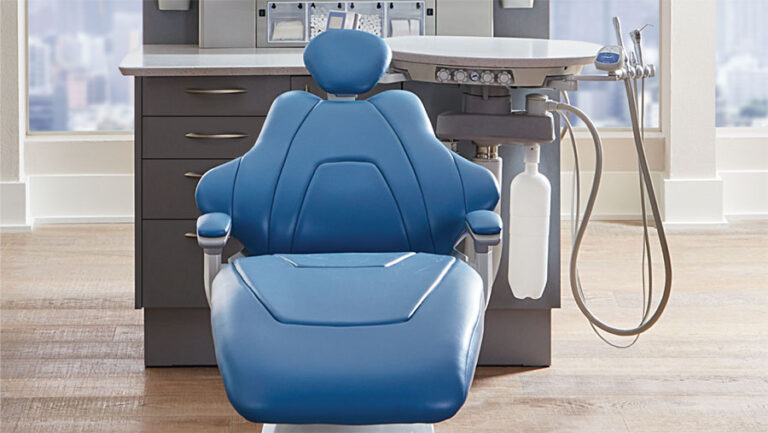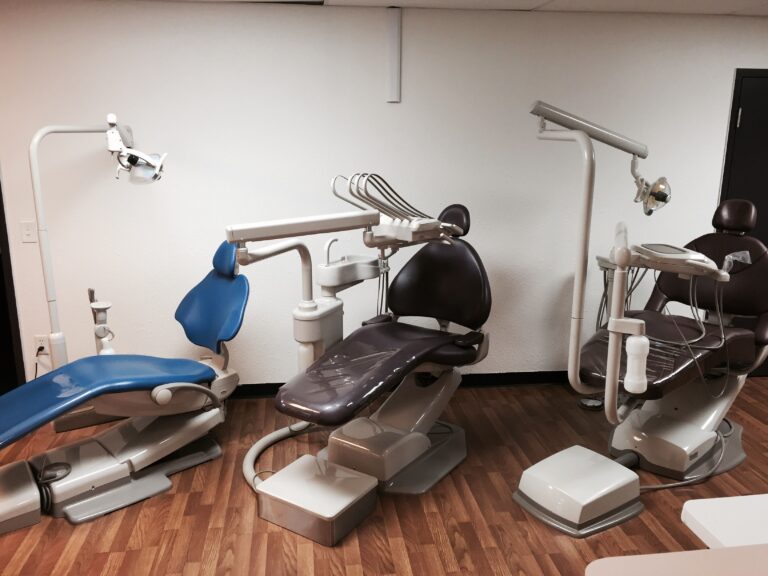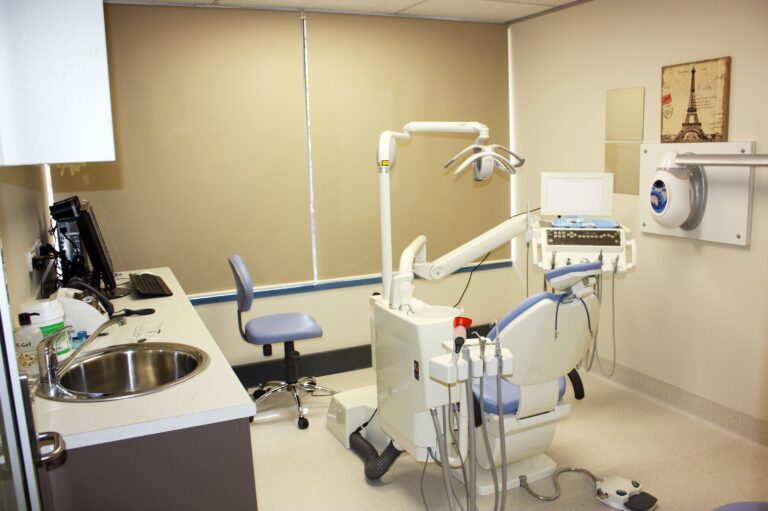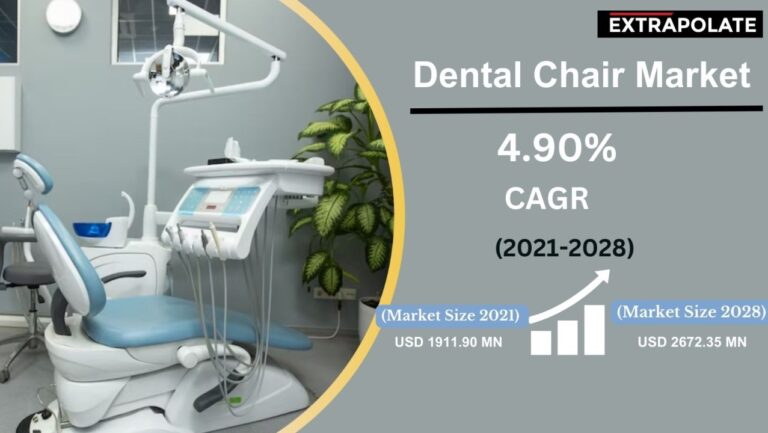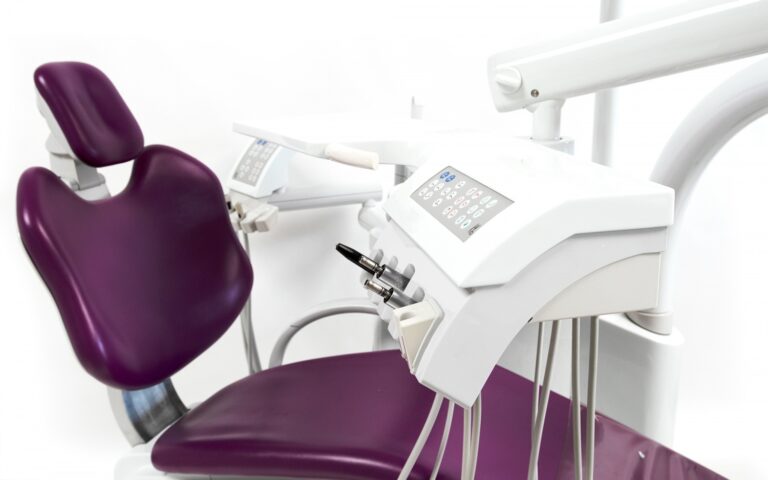In the ever-evolving world of dental healthcare, the dental chair is more than just a piece of equipment; it is a crucial component in ensuring patient comfort and facilitating efficient dental procedures. The maintenance and aesthetic appeal of a dental chair significantly influence patient trust in a dental clinic. Emphasizing dental chair reupholstering and maintenance is vital for preserving both its functionality and visual charm. This comprehensive article delves into the various aspects of dental chair care, from upholstery repair and reupholstering methods to routine maintenance, all enriched with expert insights and practical advice. Discover how to elevate the patient experience and extend the longevity of your dental chair with our in-depth guide on dental chair reupholstering and maintenance.
The Importance of Dental Chair Reupholstering
A well-functioning dental chair that appears worn can often be rejuvenated through reupholstering. Upholstery, an integral part of the chair’s comfort and appearance, requires careful consideration, especially when the chair’s mechanical aspects are in excellent condition.
Reupholstering Approaches
- Manufacturer’s Factory Replacement Cushions: Ideal for current models, these high-quality, perfectly-fitting cushions are available but may have limited color options. Older models might face availability challenges.
- Pre-stitched Fabric Kits: These kits provide convenience in recovering existing cushions with pre-stitched vinyl. However, installation might be complex and potentially costly.
- Professional Upholstery Services: Offering complete customization in color and material, these services can accommodate any chair model. They include options for foam replacement and material upgrades, ideal for comprehensive dental chair upholstery repair.
Reupholstering your dental chair not only bolsters patient comfort but also significantly enhances the overall ambiance of your dental practice. Learn more about your options and the benefits of each approach in our detailed guide on upholstery dental chairs.
When choosing a reupholstering approach, consider factors such as the chair’s age, the desired material, and the level of customization required. Professional upholstery services offer the most flexibility in terms of color, material, and chair model accommodation. Additionally, maintaining the upholstery can prolong the life of your dental chair and prevent rips or cracks.
To ensure a successful reupholstering process, follow these steps:
- Identify the brand and model of your dental chair.
- Research upholstery service providers and compare their offerings, prices, and customer reviews.
- Choose the appropriate material and color for your dental chair, considering factors such as durability, ease of cleaning, and patient comfort.
- Coordinate with the chosen upholstery service provider to schedule the reupholstering process, minimizing downtime for your dental practice.
By reupholstering your dental chair, you can extend its lifespan, improve patient comfort, and maintain a professional appearance in your dental practice.
Regular Maintenance and Servicing Essentials
Understanding the importance of daily maintenance practices is key to preserving your dental chair’s functionality and hygiene. These practices are akin to daily health rituals for optimal performance.
- Handpiece and Syringe Flushing: Essential for preventing blockages, akin to keeping a city’s plumbing clear.
- Lubrication of Moving Parts: This is similar to oiling a door hinge, vital for smooth operation and reducing wear and tear.
- Post-patient Disinfection: Critical for infection control, comparable to post-event cleanup for hygiene.
For a comprehensive approach, develop a routine encompassing these practices, schedule annual professional check-ups, and train staff for consistency. To delve deeper into daily upkeep strategies, refer to our guide on preventing and addressing common dental chair issues.
Proactive Repair and Upkeep Strategies for Dental Chairs
Regular maintenance and timely repairs are crucial for the longevity of a dental chair. Like any vital equipment, a dental chair demands proactive care. Regular servicing, akin to an annual car check-up, is essential. It helps in early detection of potential issues, preventing costly repairs.
Importance of Regular Servicing
Think of your dental chair as a vehicle requiring regular tune-ups to ensure smooth operation. Annual servicing is recommended to keep it in peak condition.
Cleaning and Maintenance Tips
To maintain your chair’s hygiene and functionality, regular cleaning and weekly maintenance checks are necessary. Ensure you use proper upholstery care techniques, and consider the benefits of dental chair pillows for added patient comfort.
Recognizing the signs for dental chair replacement is also critical. Look out for issues like noisy operation, wear and tear, or outdated technology. In such cases, exploring different types of dental chairs can be insightful.
Signs It’s Time to Replace Your Dental Chair
While regular maintenance can extend the life of your dental chair, there comes a time when replacement becomes necessary. Signs that it’s time to replace your dental chair include:
- Noisy or jerky movement
- Worn or damaged upholstery
- Outdated technology
- Lack of maintenance or repair
- Musculoskeletal pain
The Magic of Reupholstering
Reupholstering your dental chairs with high-tech fabrics provides a fortress of cleanliness. It not only enhances the aesthetic appeal of the chair but also contributes to sound absorption, reducing overall noise levels and creating a more serene environment for patients.
The Role of Preventive Maintenance
Preventive Maintenance (PM) is a reliable solution to minimize downtime and maximize savings. It involves regular inspections, servicing, and repairs to prevent breakdowns and costly emergency repairs.
Proactive repair and upkeep strategies are essential for maintaining the functionality and longevity of dental chairs. Regular servicing, proper cleaning, and timely reupholstering can significantly extend a dental chair’s life, ensuring a comfortable and hygienic environment for both patients and dentists.
Cost Considerations in Dental Chair Servicing
Viewing servicing costs as an investment is key. Regular servicing enhances equipment life and patient comfort, outweighing the initial financial outlay. Service plans can be a cost-effective way to manage these expenses.
When it comes to dental equipment, the true cost goes far beyond the initial acquisition price. It’s crucial to consider the “hidden costs” of ongoing maintenance, repairs, unexpected replacement, and typical product lifespan as part of the total cost of ownership. For instance, one of the biggest incurred costs from subpar dental equipment is lost revenue during repairs and maintenance.
Moreover, regular maintenance of dental chairs can extend their service life. Properly maintained dental chairs may last for more than 15 years, whereas chairs without maintenance may barely last a decade.
Service plans, like the Dental Fix Rx Ultimate Service Plan, offer regular preventive maintenance and repair services at a flat monthly charge, making dental equipment repair easier and more predictable.
Selecting the Ideal Dental Chair
When choosing a dental chair, consider comfort, stability, functionality, aesthetics, and reliability. It’s not just about the chair’s physical attributes but also about how it aligns with the practice’s ethos and patient care standards.
Key Factors in Chair Selection
- Comfort and Stability: Adequate cushioning for patients and ergonomic design for staff are essential. The design of the dental chair determines your well-being when treating patients for several hours a day.
- Functionality and Features: Technological enhancements for improved efficiency are crucial. Smart controls and ease of maintenance are some of the overlooked factors in a dental chair.
- Aesthetics: The chair’s appearance reflects the practice’s quality and care. Many patients judge the quality of care at a dental clinic by the type of equipment available there.
- Reliability: Durability and longevity are paramount. You should never choose a dental chair based on only its price. Consider the chair’s comfort levels, durability, and how easy it is to integrate common clinical devices.
Regular maintenance and servicing of dental chairs are crucial for their longevity and optimal performance. It’s also a cost-effective strategy in the long run. When selecting a dental chair, factors such as comfort, stability, functionality, aesthetics, and reliability should be considered. This ensures that the chair not only meets the needs of the dental staff but also aligns with the practice’s ethos and patient care standards.
Revitalizing Your Dental Chair: The MediPosture ICORE System
MediPosture’s ICORE Dental Chair Overlay System is a groundbreaking solution that enhances the comfort and aesthetic appeal of your dental chair. This system includes memory foam headrests, backrests, knee lifts, and overlay pads, all designed to elevate patient comfort and augment the chair’s aesthetic appeal.
The MediPosture ICORE System
The ICORE system is meticulously designed to provide full and comfortable support to areas where patients commonly experience discomfort from factory dental chairs. Each component of the system can be adjusted to each patient for a truly custom comfort experience. The memory foam headrest provides comfortable neck support, the backrest and knee lift offer combined lumbar support, and the 2″ thick memory foam chair overlay pad helps to relax the entire body.
| Component | Description |
|---|---|
| Memory Foam Headrest | Provides comfortable neck support |
| Memory Foam Backrest | Offers lumbar support |
| Knee Lift | Relieves lower-back pain by elevating the patient’s knees |
| Memory Foam Chair Overlay Pad | Helps to relax the entire body |
Ensuring Patient Comfort and Safety: The Role of Dental Chair Upholstery
Upholstery is not just about aesthetics; it plays a vital role in patient comfort and safety. Worn or torn upholstery not only detracts from the chair’s appearance but can also harbor bacteria, posing a risk to patient health. Regular reupholstering, therefore, becomes a key aspect of maintaining a hygienic and welcoming environment in a dental practice.
Upholstered dental chairs contribute to sound absorption, reducing overall noise levels and creating a more serene environment for patients. They are meticulously designed to support ergonomics, offering cushioned comfort, and adjustable features that allow dentists to position patients optimally, ensuring precise treatment outcomes and improved access to the oral cavity.
Moreover, upholstery’s eco-friendly materials resonate with patients who value ethical and environmentally conscious practices, enhancing the clinic’s reputation.
Upholstery Maintenance Tips
Maintaining your dental chair’s upholstery is crucial for ensuring patient comfort and safety. Here are some tips:
- Regular Inspection: Check for wear and tear, especially in high-contact areas.
- Prompt Repairs: Address minor damages immediately to prevent escalation.
- Quality Materials: Choose durable, easy-to-clean fabrics that withstand frequent use and disinfection.
Cleaning your dental chair’s upholstery involves removing ordinary dirt, dust, and smudges with a mild soap and water solution and a clean, soft cloth or towel. It’s important to avoid using abrasive materials or scrubs on your dental chair’s upholstery and make sure to dry with a soft, lint-free cloth or towel.
For infection control, it’s recommended to use disposable barrier products. The repeated use of disinfectant on equipment surfaces without the constant removal of the solution residue can eventually cause some damage to equipment surfaces.
Advanced Dental Chair Features: Enhancing the Patient Experience
Modern dental chairs, like the KAVO Primus 1058, are marvels of innovation, significantly elevating the patient experience with their advanced features:
- Adjustable Settings: Ensure precise positioning for both patient comfort and procedural accuracy.
- Ergonomic Design: Cater to various body types, enhancing comfort during procedures.
- Integrated Technology: Incorporate tools for a more efficient dental workspace.
These features, along with optional massage functions and multimedia systems, transform dental visits into a more comfortable and engaging experience. For an in-depth look at the latest dental chair technology, explore our guide to dental assistant chairs.
KAVO Primus 1058 Dental Chair
Innovative Chair Features
- Adjustable Settings: Dental chairs with electric motors enable smooth and precise positioning, catering to the specific needs of each patient and procedure.
- Ergonomic Design: Ergonomically designed dental chairs prioritize patient comfort with features like memory foam cushions, lumbar support, and adjustable headrests. These chairs are contoured to support the natural posture of patients during treatments, reducing pressure points and minimizing discomfort.
- Integrated Technology: Dental chairs with integrated technology, such as intraoral cameras or digital displays, enable dentists to educate and engage patients during treatments. Visual aids and real-time imaging help patients better understand their oral health conditions, treatment options, and post-treatment care.
In addition to these features, some dental chairs offer built-in massage functions and multimedia systems to provide distractions and entertainment during treatments, further enhancing patient comfort. By incorporating advanced dental chair features, dental practices can create a more comfortable and efficient environment for both patients and dental professionals, ultimately improving the overall patient experience.
The Economic Aspect of Dental Chair Maintenance
Investing in the maintenance and reupholstering of a dental chair might initially seem like a daunting expense. However, when viewed from a broader perspective, it’s a wise investment that pays off in the long run. Proper upkeep not only prolongs the chair’s lifespan but also ensures that it remains a comfortable and safe place for patients. By investing in maintenance, dental practices can save on the potential costs of purchasing new chairs and avoid interruptions in service due to equipment failures.
Viewing dental chair maintenance as an investment rather than an expense is crucial. Effective maintenance extends the chair’s lifespan, enhances patient comfort, and is cost-efficient in the long term.
- Preventive Maintenance: Regular check-ups can prevent costly breakdowns, akin to routine car services.
- Cost-Effective Solutions: Explore various options to find a balance between quality and expense. Annual maintenance packages can be a wise choice.
- Long-Term Planning: Incorporate maintenance costs into your budget to avoid surprises.
Remember, well-maintained equipment not only saves money but also ensures patient satisfaction and safety. For more insights into effective maintenance strategies, check out our detailed article on dental chair market trends and maintenance insights.
The Impact of Maintenance on Patient Satisfaction and Safety
Regular dental equipment maintenance could save you a world of embarrassment and help preserve patient satisfaction. If your equipment is badly worn or malfunctioning, this could put patients at risk. Regular dental equipment maintenance will help avoid adverse reports and protect your patients. Moreover, well-maintained equipment enhances patient care, leading to increased patient satisfaction and a positive reputation for the practice.
Staff Training and Maintenance
One of the most effective ways to enhance the longevity of a dental chair is to train the dental staff on its proper use and maintenance. Ensuring that your team adheres to their responsibilities regarding proper lubrication, cleaning of upholstery, and the use of appropriate cleaning supplies is crucial for maintaining the chair’s functionality and appearance.
Proper Lubrication Techniques
Lubricating the moving parts of a dental chair is essential for smooth operation and reducing wear and tear. Train your staff to:
- Identify the parts that require lubrication, such as the chair’s hydraulic system, pivot points, and adjustment mechanisms.
- Use the recommended lubricant for each component, as specified by the manufacturer.
- Apply the lubricant in the correct amount and at the prescribed intervals to prevent over-lubrication or under-lubrication.
Upholstery Cleaning and Care
The dental chair’s upholstery is subject to constant use and exposure to various substances, making regular cleaning and care essential. Educate your staff on:
- Selecting the appropriate cleaning products for the specific type of upholstery material, such as vinyl or leather.
- Using a mild soap and water solution to remove dirt, dust, and smudges, and avoiding abrasive materials or scrubs that can damage the upholstery.
- Drying the upholstery with a soft, lint-free cloth or towel after cleaning to prevent moisture damage.
- Inspecting the upholstery regularly for signs of wear and tear, and promptly addressing any damages to prevent further deterioration.
Infection Control Measures
Maintaining a hygienic environment is paramount in a dental practice, and the dental chair plays a significant role in infection control. Train your staff to:
- Use disposable barrier products to protect the chair’s surfaces from contamination during procedures.
- Disinfect the chair’s surfaces thoroughly between patients, following the manufacturer’s guidelines and using approved disinfectants.
- Remove any disinfectant residue consistently to prevent damage to the chair’s surfaces over time.
By providing comprehensive training on dental chair maintenance and care, you can ensure that your staff is well-equipped to maintain the chair’s functionality, appearance, and hygiene. This not only prolongs the life of your dental chair but also enhances patient comfort and safety, contributing to the overall success of your dental practice.
Conclusion
In the dynamic world of dental healthcare, the dental chair is more than just a piece of equipment; it is a crucial component in ensuring patient comfort and facilitating efficient dental procedures. Prioritizing regular maintenance and timely reupholstering reflects a commitment to excellence in patient care, allowing dental practices to guarantee their chairs remain symbols of comfort, safety, and operational efficiency.
Dental chair maintenance is a multifaceted endeavor that encompasses various aspects, from regular servicing and proactive repairs to cost considerations and staff training. By adopting a comprehensive approach to dental chair care, dental practices can ensure the longevity of their equipment, enhance patient satisfaction and safety, and ultimately achieve sustainable growth.
Reupholstering plays a vital role in maintaining the aesthetic appeal and functionality of dental chairs. Whether opting for manufacturer’s replacement cushions, pre-stitched fabric kits, or professional upholstery services, investing in timely reupholstering can significantly extend the lifespan of dental chairs while enhancing patient comfort and trust.
Moreover, incorporating advanced features such as adjustable settings, ergonomic design, and integrated technology can elevate the patient experience, transforming dental visits into more comfortable and engaging encounters. By staying abreast of the latest innovations in dental chair technology, dental practices can create a more efficient and patient-centric environment.
Ultimately, the key to successful dental chair maintenance lies in viewing it as an investment rather than an expense. By allocating resources towards regular servicing, preventive maintenance, and staff training, dental practices can avoid costly breakdowns, ensure patient safety, and maintain a positive reputation within the community.
As the world of dental healthcare continues to evolve, prioritizing dental chair maintenance and reupholstering will remain essential for practices seeking to deliver exceptional patient care. By embracing a proactive approach to dental chair care and staying informed about the latest trends and best practices, dental professionals can ensure their equipment remains a reliable and comfortable foundation for their practice’s success.
For more insights into enhancing your dental chair’s longevity and optimizing your practice’s performance, explore our comprehensive guide to maintaining dental chairs. With the right strategies and a commitment to excellence, you can transform your dental chairs into enduring symbols of quality care and patient satisfaction.
What are the key benefits of regular dental chair reupholstering?
Enhances patient comfort and trust.
Maintains professional appearance of the practice.
Extends the lifespan of the chair.
How often should a dental chair be serviced for optimal performance?
Annual servicing is recommended, along with daily maintenance routines.
What are some signs that indicate it’s time to replace a dental chair?
Noisy or jerky movements, worn upholstery, outdated technology, and frequent need for repairs.
Can regular maintenance of a dental chair impact patient satisfaction?
Absolutely. Well-maintained chairs provide comfort and safety, enhancing patient satisfaction and trust in the practice.
What should be considered when choosing a new dental chair?
Comfort, stability, functionality, aesthetics, reliability, and how it aligns with the practice’s ethos.

